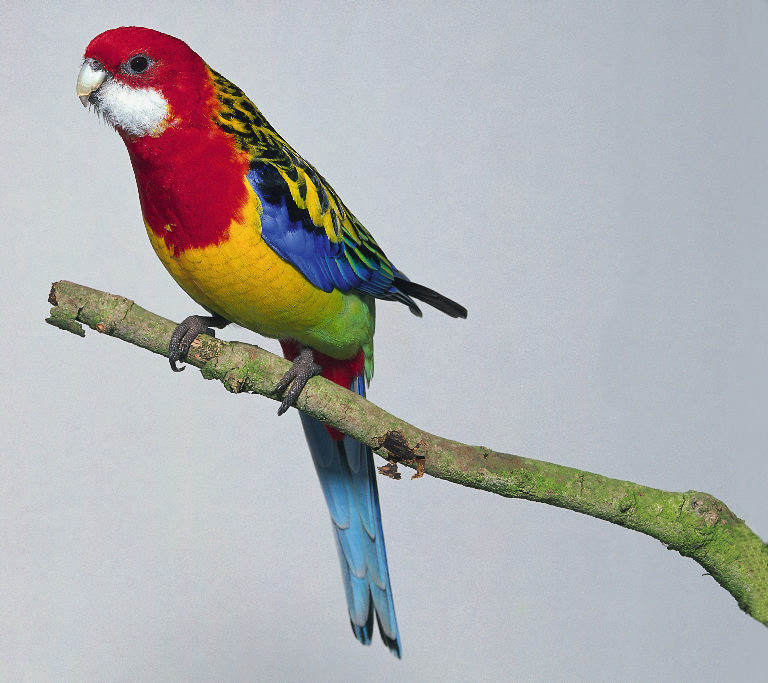
Eastern rosella(Platycercus eximius)
Phylum —chordata
Class — aves
Order — psittaciformes
Family —psittaculidae
Genus – platycercus
Three subspecies of Eastern rosella are recognized:
- Platycercus eximius eximius, Victoria and southern New South Wales. Black feathers on the back have green margins. Rump is pale green.
- Platycercus eximius elecica, northeast New South Wales and southeast Queensland. In the male the black feathers on the back have golden-yellow margins, and greenish-yellow in the female. The rump is bluish-green. This subspecies is also called the Golden-mantled rosella, often abbreviated to GMR.
- Platycercus eximius diemensis, eastern Tasmania. White cheek patches are larger and the red on the head is darker.
Appearance
The Eastern rosella is 30 cm (12 in) long. It has a red head and white cheeks. The beak is white and the irises are brown. The upper breast is red and the lower breast is yellow fading to pale green over the abdomen. The feathers of the back and shoulders are black, and have yellowish or greenish margins giving rise to a scalloped appearance that varies slightly between the subspecies and the sexes. The wings and lateral tail feathers are bluish while the tail is dark green. The legs are grey. The female is similar to the male though duller in coloration and has an underwing stripe, which is not present in the adult male. Juveniles are duller than females and have an underwing stripe.
Habitat
The natural range of the Eastern rosella is eastern Australia, including Tasmania. The species is found in lightly wooded country, open forests, woodlands, gardens, bushlands and parks.
Behavior
Known to be a calm and quiet bird otherwise, Easterns too have their bad days. And most of them fall during their hormonal changes. The breeding season makes an Eastern rosella a bit aggressive.
Easterns are known to be a species that isn’t very loud. Apart from an occasional call in the morning or evening, they hardly make any voice that can be considered noise. Due to their calm and quiet behavior, Easterns are considered one of the best pets for an apartment dweller as the voices can barely be heard by the neighbors.
Diet
The diet of Eastern rosellas mainly consists of fruit, seeds, flowers and insects.
Reproduction
Eastern rosellas usually breed in spring but if needed summer as well. They can have 2–9 eggs. In the wild their breeding hollow is 1m deep and 30m high up a tree. The sign the Eastern rosella mostly shows that they would be breeding is that they give food to each other.
In captivity
These parrots can live for over 20 years.
In captivity, a small bird seed mix with canary, oats and sunflowers seeds will work perfectly. It would have to be supplemented with a lot of fresh fruits. You can also provide them with plenty of fresh, untreated branches, which they will love to chew on. They also double as a perch and a way to bring some small change into the daily life of your pet parrot.
Eastern Australia can be arid and harsh land for birds, yet rosellas thrive there. No wonder they tend to be so hardy and healthy! One of their more important requirements is free flight room. Their energy will need to be spent efficiently. With a bit of careful attention and regular check-ups, your pet should have no major issues.
 Russian
Russian
 English
English























